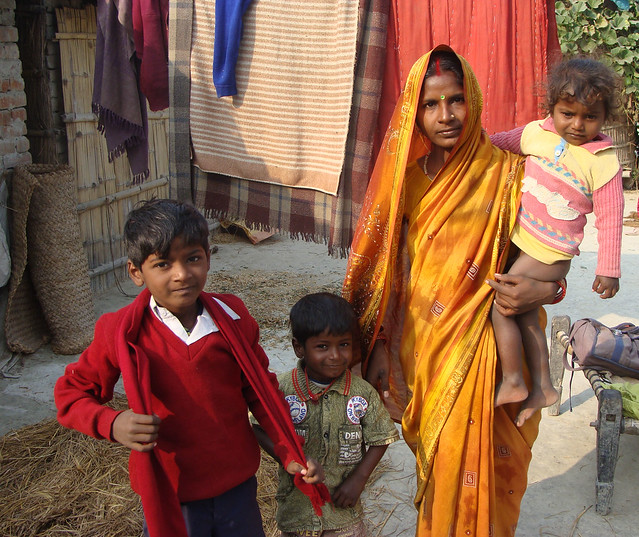 Advancing gender equality means a shift in thinking — from seeing boys and men as part of the problem, to including boys and men as part of the solution. (Credit: Sujoy Dhar/IPS)
Advancing gender equality means a shift in thinking — from seeing boys and men as part of the problem, to including boys and men as part of the solution. (Credit: Sujoy Dhar/IPS)
Dear Editors,
Thanks for the story on working with males and females on gender equality.
You may also be interested in work that ICRW has done in this area. We developed and evaluated a program called “Gender Equity Movement in Schools” that is now being scaled up to 250 schools in Mumbai. Additionally, the project team has traveled to Vietnam for discussion on adapting the program to the Vietnamese setting.
…
Ellen Weiss
Senior Technical Advisor
Research Utilization and Development
International Center for Research on Women
We love hearing from you! Send us your comments, questions, examples and ideas for making the world more gender equitable: mdg3 [at] ips [dot] org.
]]>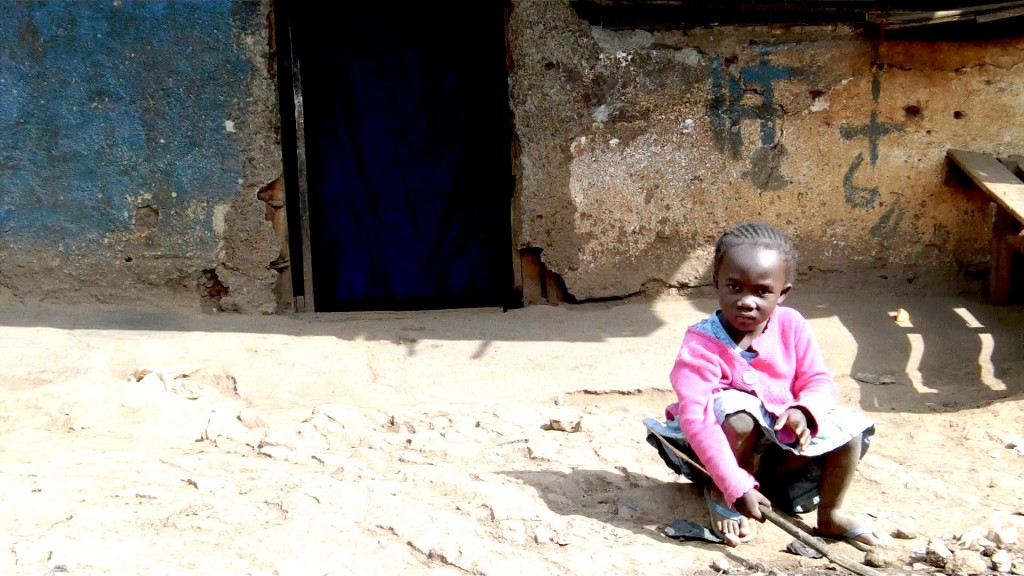 (IPS/Aline Cunico)
(IPS/Aline Cunico)
Considered one of the biggest slums in the world, Kibera is Nairobi’s–and East Africa’s–largest urban settlement. Over one million people struggle daily to meet basic needs such as access to water, nutrition and sanitation. In this community lacking education and opportunities, women and girls are most affected by poverty.
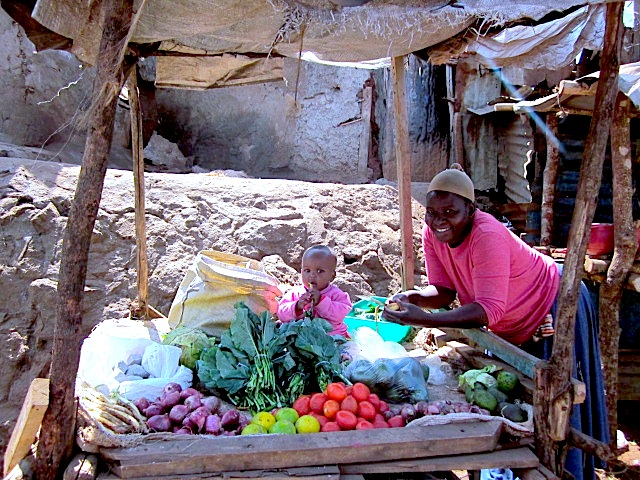 (IPS/Aline Cunico)
(IPS/Aline Cunico)
Violence against women, rape, prostitution, HIV/AIDS, female genital mutilation, poverty, sexual abuse, unequal access to education and lack of reproductive health care are some of the issues women face daily in Kibera.
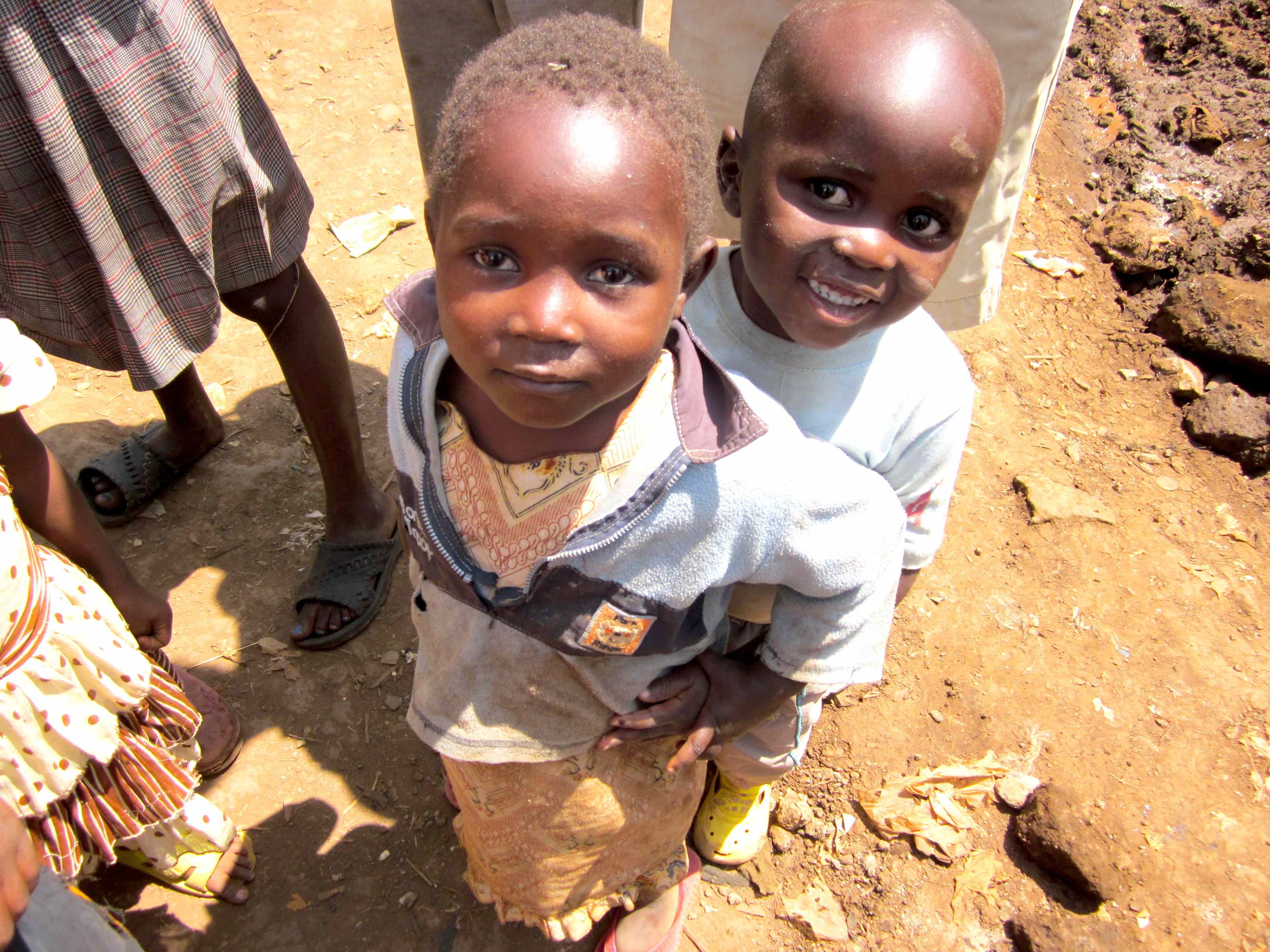 (IPS/Aline Cunico)
(IPS/Aline Cunico)
One-fifth of the population of Kibera lives with HIV and at least 50,000 children are orphaned by AIDS.
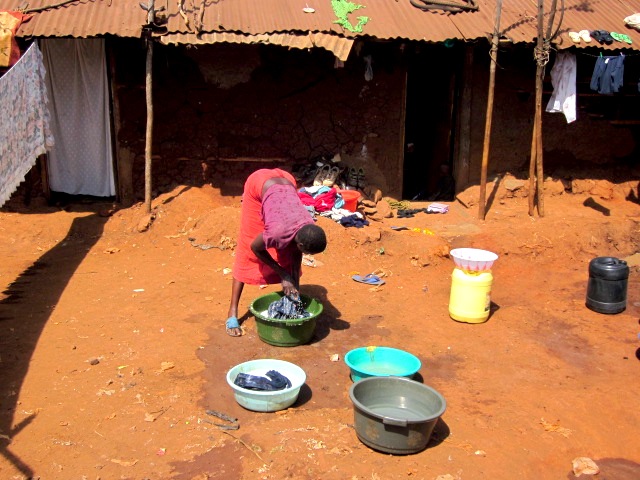 (IPS/Aline Cunico)
(IPS/Aline Cunico)
According to the organisation Carolina for Kibera, young women in slums aged 15-24 are contracting HIV at a rate five times that of their male counterparts.
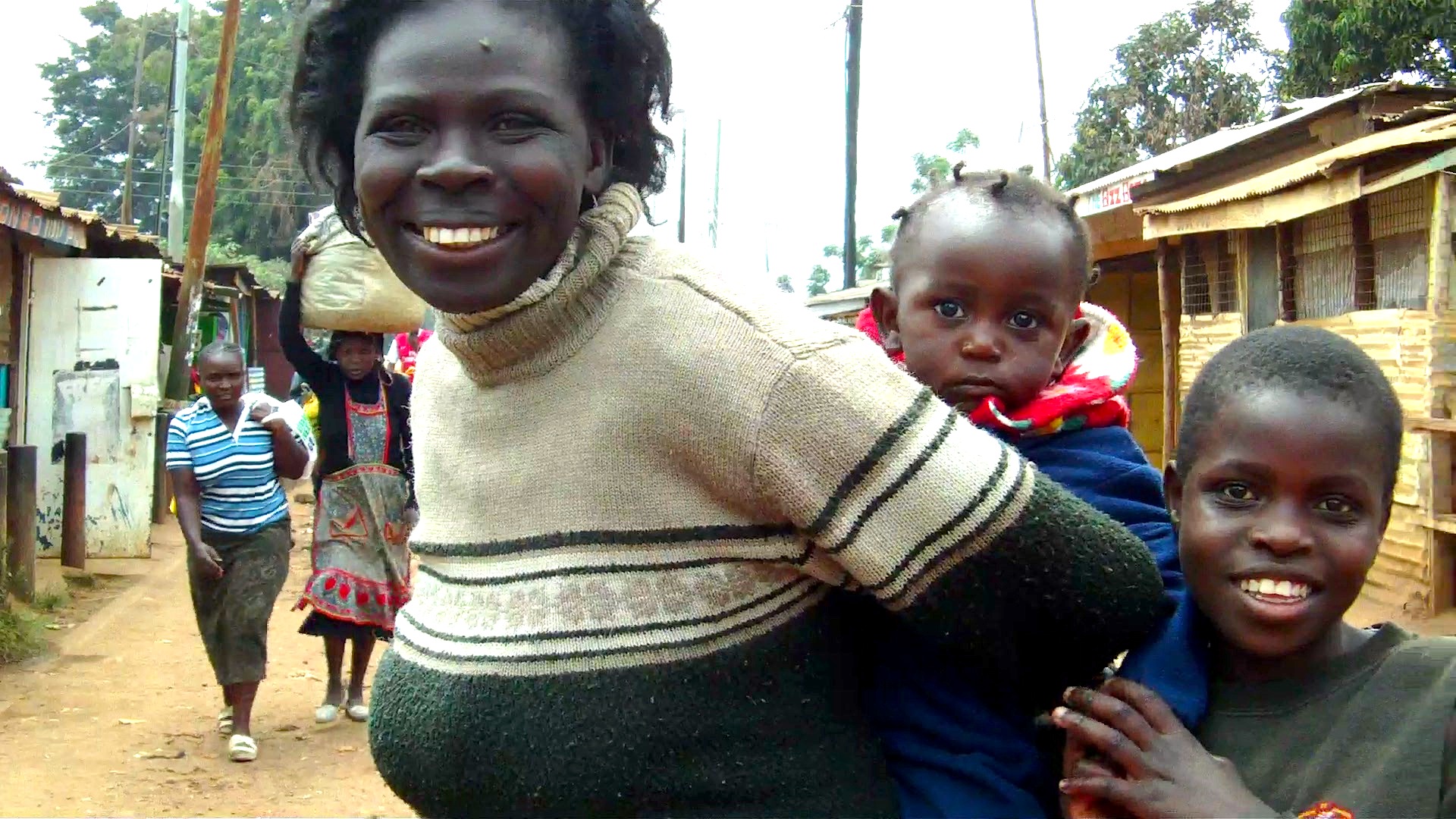 (IPS/Aline Cunico)
(IPS/Aline Cunico)
As a consequence of the high incidence of HIV in this community, many women like Benta are forced to care not only for their children, but for the children of relatives or neighbours who passed away from the disease. Benta currently provides shelter and food for 32 orphans.
As the world’s population migrates to urban centres in search of employment and better living conditions, settlements like Kibera grow at a rapid pace, making it impossible to accommodate the needs of so many.
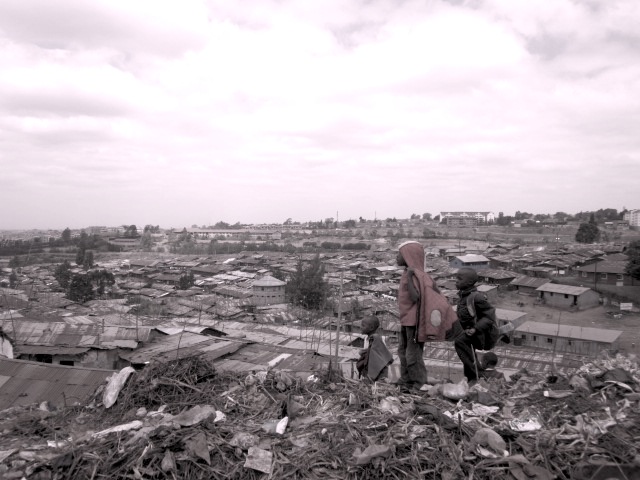 (IPS/Aline Cunico)
(IPS/Aline Cunico)
In Nairobi alone, an estimated two million people–half of the city’s population–live in slums. Housing in such communities is inadequate and the small percentage of slum dwellers who work in the formal labour market earn an average of one U.S. dollar per day.
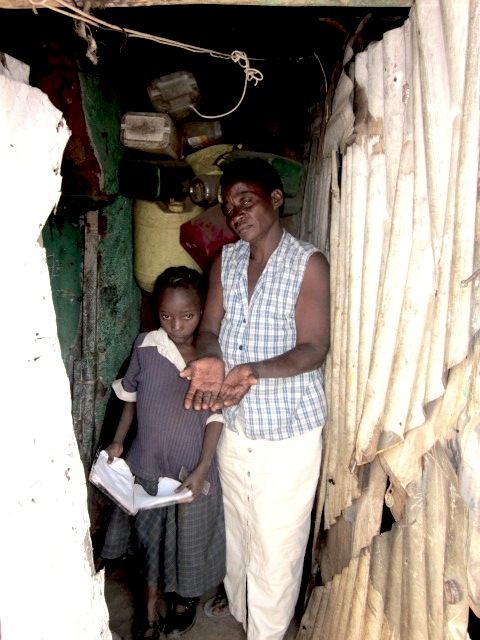 (IPS/Aline Cunico)
(IPS/Aline Cunico)
“I have five children to care for and my husband has passed away. I can’t find a job because I am old”, says this woman. Over 50 percent of the available workforce in Kibera is currently unemployed.
In Kibera and other slums, the level of female illiteracy remains high due to gender inequality. Although primary and secondary schooling is provided in the community, most education centres are informal and unregulated by the government.
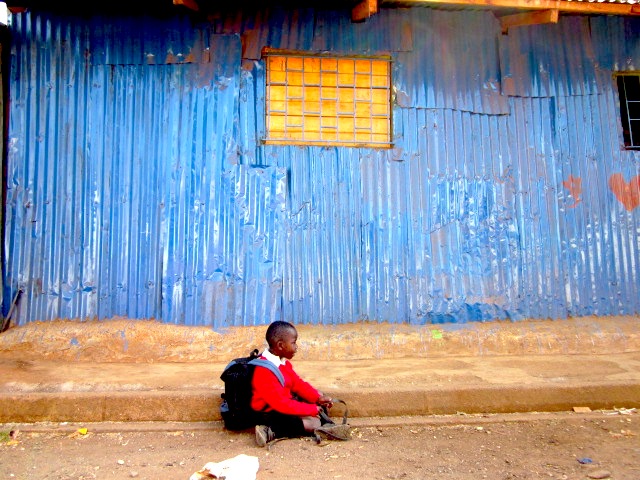 (IPS/Aline Cunico)
(IPS/Aline Cunico)
Many parents struggle to meet boarding and uniform costs for their children and give male students priority. As a result, young girls are often forced into early marriages or low-wage salaries.
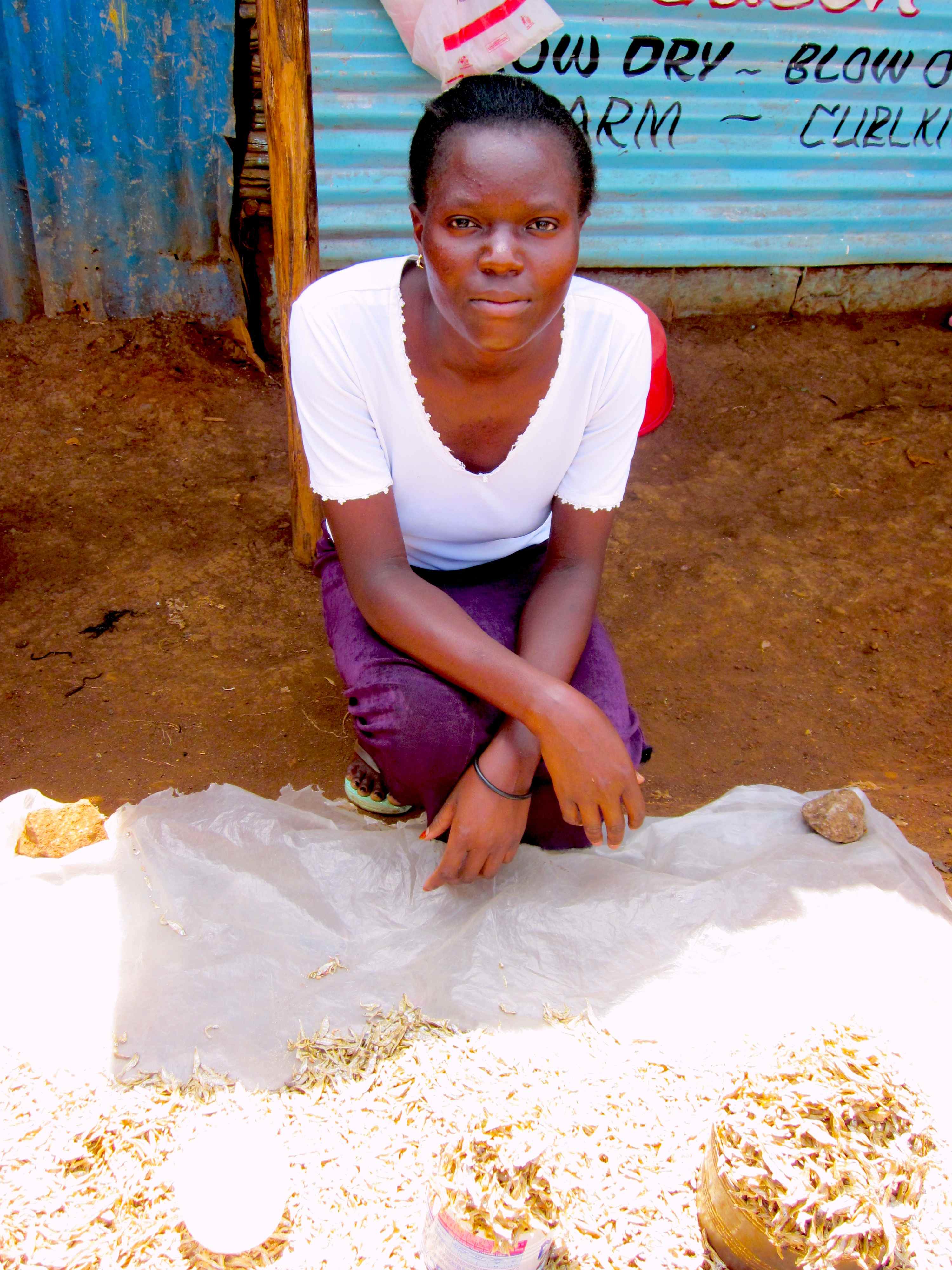 (IPS/Aline Cunico)
(IPS/Aline Cunico)
Unable to afford education, women are left with few options. Winnie works selling fried fish on the streets of Kibera, earning an average of 10 U.S. dollars a month.
Nationwide post-election violence in 2008 caused further economic and social insecurity for Kenya’s extreme poor. Many women in Kibera became pregnant in a state of homelessness or lost their husbands during the conflict.
The lack of sanitation facilities has also contributed to sexual violence, a 2010 Amnesty International report found, as women have become easy targets when walking long distances to reach a latrine at night. Afraid of being raped, women have started using plastic bags to dispose waste on the streets.
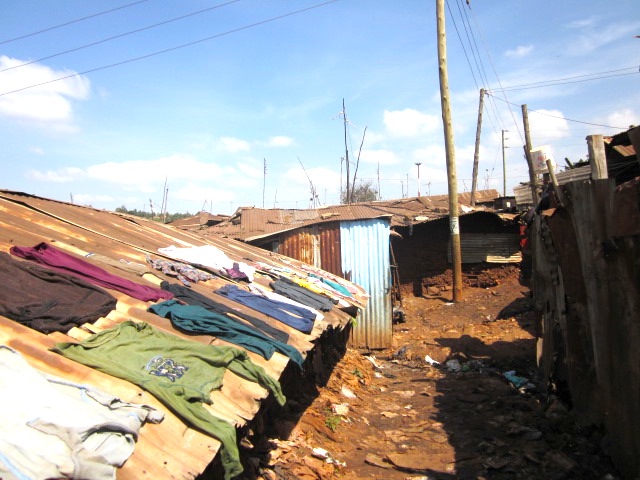 (IPS/Aline Cunico)
(IPS/Aline Cunico)
These so-called “Flying Toilets” have contaminated the settlement and increased the incidence of diseases like cholera and dysentery.
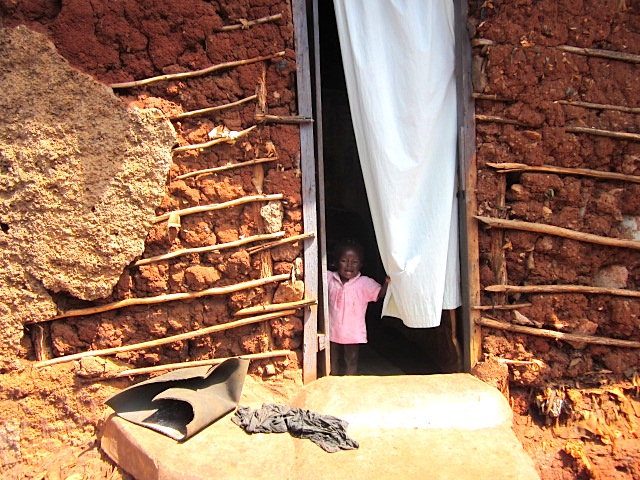 (IPS/Aline Cunico)
(IPS/Aline Cunico)
The government of Kenya has never provided health assistance to Kibereans and the few health clinics available were funded by charities.
Despite anecdotal evidence of women enduring violence daily, there remains a lack of relevant gender-based statistics on Kibera, as the Kenyan government ignores the existence of the community. With over 50 percent of Kibera’s population under the age of 15, this means an entire generation struggling to fight gender disparity and escape poverty is being overlooked.
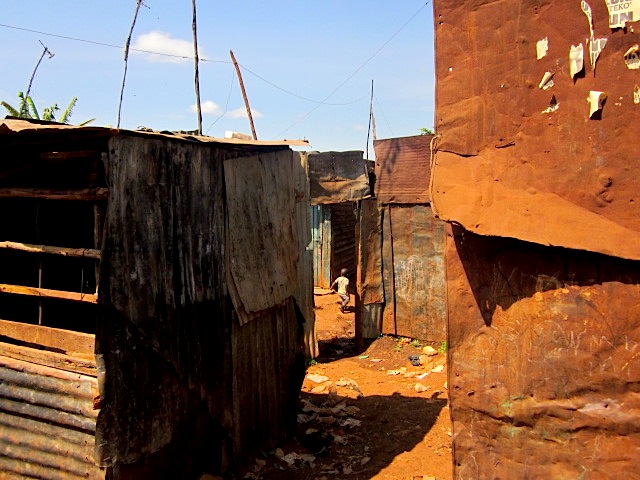 (IPS/Aline Cunico)
(IPS/Aline Cunico)
Sandwiched in the middle of Central America, with a population of just under six million and a heavily agricultural economy, Nicaragua remains the poorest country in Latin American and the Caribbean after Haiti with a Human Development Index (HDI) ranking of 115. Yet, in the 2010 World Economic Forum (WEF) Global Gender Gap (GGG) Report, it ranks at 30 of 134 countries in terms of gender-based disparities, joining a top 30 club including equality champions Iceland and the Scandinavian states, and wealthy nations Australia, the US, and the UK. The report’s message is clear - bulging state coffers are not the sole prerequisite for establishing frameworks for fairness and gender equality.
The legacy of the 1979 socialist revolution in Nicaragua lives on. Female literacy rates equal those of male, girls enjoy equal enrollment in primary school, and female achievements in secondary and third level education outnumber those of boys and young men. Nicaraguan women also outnumber men in technical and professional positions. Moreover, the country has been making 20 place leaps every year for the past three years, from a dip to 90 in 2007, a spot occupied today by neighboring El Salvador. Guatemala comes in at 109 while Belize is at 93, Honduras at 54 and Panama at 38. Of the Central American family, only wealthy Costa Rica outranks Nicaragua, and only by two places.
Nicaragua’s strong ranking flows from significant equality in the formal education and employment sectors, and the fact that the country had relatively high proportion of female government ministers (although women’s representation in parliament is low at 19 out of 92 members). The latter measurement implies that women in positions of power are a Universal Good Thing, whereby feminists hope that female politicians will concern themselves with socially progressive policies, use their power to address gender disparities and provide positive role models for young women and girls. However, there is no guarantee that a woman in power will not reproduce, reinforce or even instate patriarchal structures and leave ‘soft’ issues such as gender equality to civil society organizations.
More significantly, little regard is given by the WEF Report to gender based violence (GBV). While it includes the existence (not the effectiveness) of legislation punishing acts of violence against women in Nicaragua as additional data, it in no way examines or captures the most fundamental sort of inequality, whereby women and girls are are not safe from assault, sexual attack and harassment at home or in the street.
Despite advances made under banners of revolution and progress in the past 30 years, Nicaraguan society remains steeped in machismo culture. Only last month, the Supreme Court downgraded a rape conviction to a ‘crime of passion’, thus reducing the sentence from eight to four years, in a high profile case where the assailant is known to have influential political connections. According to the Nicaraguan Network of Women against Violence, 89 women were murdered in 2010, and 51 in the year to date, while one in three Nicaraguan women and girls report having suffered some form of GBV. The vast majority of these crimes are committed by a spouse, ex-partner or other family member. Domestic violence is endemic, as is the rape and sexual abuse of young women and girls by relatives, evidenced by this 2010 Amnesty International report. The Amnesty report finds that rape and sexual abuse remain strictly taboo in the country, and that to report the crime often leads to humiliation for the victims, disbelief by authorities and rejection within their family and wider communities. A further attack on the rights of victims of sexual violence comes in the form of a 2006 ban on therapeutic abortion, so that women and girls pregnant as a result of rape must carry and give birth to their attacker’s child whether or not they want to. In a 2010 case outlined by Amnesty, the mother of a girl who was repeatedly raped by her stepfather was charged with complicity in the crime when she reported it to the police, while the suspect was allowed to remain in the community. The girl’s mother was sentenced to 12 years in prison and spent four months incarcerated before the sentenced was quashed.
While this case study is particularly shocking, it provides a grim snapshot of the dangerous attitudes that prevail in the country from the grassroots level to the president’s office, and and the battle that women and girls face to pursue justice, or just to stay safe. While Nicaragua has some of the most progressive gender-related legislation in Central American, few local or national level resources have been allocated to tackling the problem of GBV, and police are generally untrained and unprepared to deal with cases on the rare occasion that they are reported. This leaves prevention, counseling and the pursuit of justice for abused women and girls to an overworked and under-resourced network of human rights organizations.
The GGG is calculated across four broad themes - economic participation and opportunity, education attainment, health and survival, and political empowerment. However, the health and survival rating is merely calculated by life expectancy at birth and sex ratio at birth. It seems unbalanced that a country would receive a major boost in ratings for having a decent number of women in government at ministerial level, but that the impact of living in a culture that accepts and facilitates casual brutality against women and girls is not considered a major public health issue. If the the list was compiled again with GBV prevalence properly examined, it is likely that Nicaragua would slide far down the rankings and show an enormous gender gap between those who feel safe and enjoy bodily integrity, and those who do not. Global rankings such as these give us only the merest hint of gender relations and equality - scratch the surface of many of the countries listed and no doubt a host of contradictions and anomalies will come tumbling out.
]]>In spite of U.S-led military invasion since 2001 to bring “enduring freedom” and democracy, about 50 women die in childbirth each day in Afghanistan; one in three is physically or sexually abused, and the average life expectancy of women is 44 years.
In addition, more than 85 percent of Afghan women are illiterate, while 70 percent of school-age girls do not attend school for various reasons–conservative parents, lack of security, or fear for their lives.
On top of that, 41 percent of these child deaths occur among newborn babies in the first month of life.
Up to 99 percent of child and maternal deaths occur in developing countries. The lives of 250,000 women and 5.5 million children could be saved each year.
These and many other spine-chilling facts, appear in Save The Children‘s new report on the State of the World’s Mothers. The following are extracts of this report:
The Death Of Newborn Babies
The most dangerous time in a child’s life is during birth and shortly thereafter.
Newborn babies – those in their first four weeks of life – account for over 40 percent of deaths among children under age 5.
Childbirth is also a very risky time for mothers in the developing world, around 50 million of whom give birth each year at home with no professional help whatsoever.
Save the Children’s eleventh annual Mothers’ Index compares the well-being of mothers and children in 160 countries –more than in any previous year.
The Mothers’ Index also provides information on an additional 13 countries, 6 of which report sufficient data to present findings on children’s indicators.When these are included, the total comes to 173 countries.
The Best Countries
Norway, Australia, Iceland and Sweden top the rankings this year.
The top 10 countries, in general, attain very high scores for mothers’ and children’s health, educational and economic status.
Afghanistan, The Worst Country To Be A Mother
Afghanistan ranks last among the 160 countries surveyed. The 10 bottom-ranked countries–seven from sub-Saharan Africa– are a reverse image of the top 10, performing poorly on all indicators.
The United States places 28th this year.
Grim Conditions
Conditions for mothers and their children in the bottom 10 countries are grim.
On average, 1 in 23 mothers will die from pregnancy-related causes. One child in 6 dies before his or her fifth birthday, and 1 child in 3 suffers from malnutrition.
Nearly 50 percent of the population lack access to safe water and only 4 girls for every 5 boys are enrolled in primary school.
Comparing Norway And Afghanistan
The gap in availability of maternal and child health services is especially dramatic when comparing Norway and Afghanistan.
Skilled health personnel are present at virtually every birth in Norway, while only 14 percent of births are attended in Afghanistan. A typical Norwegian woman has more than 18 years of formal education and will live to be 83 years old.
Eighty-two percent are using some modern method of contraception, and only 1 in 132 will lose a child before his or her fifth birthday.
At the opposite end of the spectrum, in Afghanistan, a typical woman has just over 4 years of education and will live to be only 44.
Sixteen percent of women are using modern contraception, and more than 1 child in 4 dies before his or her fifth birthday. At this rate, every mother in Afghanistan is likely to suffer the loss of a child.
Sweden, Best Place To Be A Child; Afghanistan, The Worst
Zeroing in on the children’s well-being portion of the Mothers’ Index, Sweden finishes first and Afghanistan is last out of 166 countries.
While nearly every Swedish child – girl and boy alike – enjoys good health and education, children in Afghanistan face a 1 in 4 risk of dying before age 5.
Thirty-nine percent of Afghan children are malnourished and 78 percent lack access to safe water. Only 2 girls for every 3 boys are enrolled in primary school.
Human Despair
These statistics go far beyond mere numbers.The human despair and lost opportunities represented in these numbers demand mothers everywhere be given the basic tools they need to break the cycle of poverty and improve the quality of life for themselves, their children, and for generations to come.
Full Report:
Save The Children:
http://www.savethechildren.org
Copyright © 2011 Human Wrongs Watch
This article can be re-published, sourcing to Human Wrongs Watch:
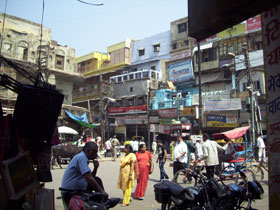
Streets are not safe for women, especially in poorer neighborhoods.
By Karen Ma
When I first arrived in Delhi two years ago, I noticed a rather disturbing tendency among most waiting drivers, street salesmen, or household guards. They would leer at my Asian women friends and me when we strolled past them on quiet residential streets. Male shopkeepers and auto-rickshaw drivers would smile insinuatingly or make snide remarks when I visited local markets. I had trouble understanding the source of this unwanted attention, especially given that I’m a middle-aged mom with a teenage son and also dress conservatively. Okay, I’m a Chinese-American, have slanted eyes and look visually different from the locals. But is this enough reason to draw such reactions?
I did become self-conscious about my attires: could it be that I was wearing a short-sleeved shirt, or that I was wearing shorts—the long version cut just above the knees that would hardly raise an eyebrow anywhere in the West or East Asia? Delhi, after all, is among the more conservative cities of India where in some parts strict rules prohibited anything less than fully-covered dresses for women, even in temperatures as high as 45 degree Celsius. It’s true that Kama Sutra was a part of the Indian culture, but I was also told that in most parts of northern India, sexuality continues to be very repressed. So when I modified the way I dressed further, I noticed the “looks” were less—somewhat–, but still, the stares persisted.
Then I read in Anita Jain’s memoir, Marrying Anita: A Quest for Love in the New India, that some Indian men prefer fairer-skinned women from the North East—the eight states connected to Mainland India through a narrow corridor that includes Assam, Nagaland, Manipur, Arunachal, Meghalaya, Mizoram, Tripura and Sikkim—where people look no different from the Chinese, the Japanese or the Koreans. Was this about the weird sexual fantasies of some men obsessed with skin colors? Had I inadvertently become a case study in people’s prejudice toward Northeastern women, I wondered aloud.
It was only after I started scanning the local papers more closely in recent weeks that I realized, the negative attention I was receiving dovetails with systematic racial discrimination and stereotyping here against Northeasterners, who in recent years have poured into the capital to study and work.
The Times of India on April 16 ran two articles about women from Manipur being regularly molested or assaulted by groups of men in their neighborhood of Munirka in south Delhi, for instance, with some leading to gang rapes or even murder. One woman who was touched inappropriately by a group of five drunken men recently in the same neighborhood said the men called her a prostitute and threatened to give her a “good time, better than the other men you’ve seen” as they encircled and grabbed her. She was able to free herself only after screaming and throwing a brick at one of the men.
In another news article published in the Mail Today on April 18, a report on a project by the North East Support Centre & Helpline (NESCH) says up to 78 percent of the 200,000 North-East population living in Delhi is subject to various kinds of humiliations, including sexual harassment, molestation, human trafficking, beating, rape and murder, largely because of their appearance, with the women bearing the brunt of the abuse for the past six years. This began with a heinous crime, the gang rape of a 19-year-old girl from Mizoram while in a moving car in central Delhi six years ago. The assaults kept getting worse, culminating in the 2009 gang-rape and murder of a 7-year-old girl from Nagaland, the attempted rape and murder of a 19-year-old Manipur girl at Murnika, and in the gang-rape in 2010 of a 30-year-old Mizoram woman. Thus far, some 96 criminal cases against the North-East community have been filed since 2005, according to the NESCH.
Mandu Chandra, an activist and spokesperson for NESCH, says the cause of the racial discrimination, attacks and sexual violence against Northeasterners, especially women, is ‘social profiling.’ “The majority of North East India residents is ethnically from the Mongoloid race and fall out of the caste hierarchy. This is the reason they are discriminated against,” he said.
Chandra was referring to the general stereotyping among conservative Delhiites, which tends to believe that women from the North East have loose morals and are sexually available because they’re from a part of India that hasn’t been “Sanskritized,” thereby supposedly making them more willing to engage in sex and illegal drugs for profit or a good time.
An NGO worker who worked in Assam once told me women from the backwater Northeastern states have the reputation of engaging in sex work once they arrive in the capital. In fact, one report in the BBC last September said thousands of women from the North East may had been trafficked or duped from their hometowns to Delhi and other big cities to engage in prostitution work during the Common Wealth Game last fall, after being promised lucrative jobs. Many more of the minority women, however, are educated and have found work in the central government, or are employed in such sectors as retail, IT, the call-centers and hospitality. Yet the fact that some of these women choose to dress in jeans and non-Indian attires, or sometimes imitate the socialites by wearing skimpy dresses further perpetuates the derogatory image of them as sex objects.
Worse, the violence and stereotypes against the Northeastern women are aggravated and amplified by Delhi’s law enforcing agencies’ prejudices. They routinely refuse, deny, or delay to entertain complaints filed by victims from this region. In fact, victims say many in the mostly male police force in Delhi typically taunt them by asking inappropriate questions, though admittedly this problem is not unique to Northeastern women, but all women victimized by sexual crimes. Sadly this attitude is also among many conservative males in India –the common perception is that if the women were violated, then they must have done something to deserve it. The end result is that many victims refuse to speak out about their abuse to avoid being humiliated the second time. This makes them easy prey for attackers and exposes them to even greater violence, completing a vicious cycle.
My immediate reaction to this horrendous discrimination and violence against a regional people in their very own country was disbelief, anger and sadness given that India holds out so much hope given its international standing as a country that embraces and tolerates cultural diversity. The problem, on a second look, however, is a lot more complex. It’s also about a fast-changing metropolis leading to renewed tension, with the values of new inhabitants from all parts of India on collision course with each other. In the past five, six years, more migrants have been moving to the capital en mass, including those from extreme conservative parts of the far north rural communities and the more liberal from the far-east and the southern states. They are drawn to Delhi`s promises of better paid jobs and educational opportunities. Yet as more women are migrating to the city, society is still not accustomed to women on their own or with men who are not their fathers, husbands or sons.
Gamma Sharma, a writer for e-pao.net—an online forum about gender and racial discriminations in India—pointed out in an essay: “Indian males, coming from the rural parts of the country, are the most desperate ones regarding sex, as exposures to the opposite sex has been kept at a minimum at their youth, and the sudden exposure to a more open culture of the North East (proved) too much for them to handle.”
In Delhi, sadly, it is the women who pay the steepest price for these social changes. Almost daily, the newspapers report on more rapes, molestation, violence and murders of women. According to the National Crime Records Bureau, Delhi accounts for over 47 percent of rapes and abduction of women in urban India. The streets of Delhi have become so unsafe, especially at night, that working women who can afford it hire female chauffeurs to drive them home after late night shifts. While more and more Indian women have the opportunities to work and be educated, their ability to enjoy their economic and social independence is impaired by their need to defend their own safety in a society that still, at its deep core, has trouble accepting women wielding more power and asserting their freedom.
]]>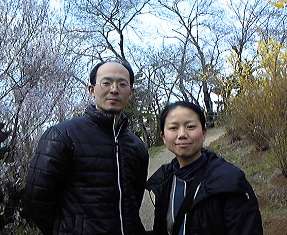
By Ayako Oga
I lived in Okuma-machi, a hamlet in Fukushima prefecture, which is just 6 kilometers from the now crippled Fukushima Daiichi nuclear power plant. It was a beautiful and quiet area with a close knit community that was a mix of both young and old people. Naturally, all our lives have changed drastically after the huge earthquake hit on March 11. The most difficult thing to comprehend and accept is the high radiation contamination in our area that has made it starkly clear to me that I will never be able to return home. It’s also difficult because we had just built a new home and I was buying new curtains and plants for the garden when this tragedy struck. My husband and I are still assessing the situation while we now live with my parents in Tokyo.
The hardest and most painful aspect of this nuclear catastrophe is that I moved away from the big city to live in Okuma-machi where we believed life in the countryside was the better choice compared to the stress faced in Tokyo. I had friends in Okuma-machi and so my husband and I decided to settle down there. My husband worked in the local post office and I spent time cultivating vegetables in a small rental plot of land and volunteered in an organic café. The older farming population in the neighbourhood was very kind to me. The only thing that bothered me was the nuclear plant that operated close by and I would get together with my friends in the evenings to discuss among us the worries we had over the possibility of an accident. Most other residents seemed to accept the power plant because they believed the officials who had told them that safety standards by the company, Tokyo Electric Company, were impeccable. I was not one of the believers and the others knew it. But in typical Japanese style, we did not create friction between us over this issue. The stark reality was also that the nuclear plant provided employment to the locals who needed the jobs as farming was not a lucrative way of life in Ookuma-machi. In addition, Fukushima was extended financial subsidies for the development of the local towns and villages and with the appearance of good roads, school buildings and other infrastructure, and the residents were happy about the progress. Thus, for the few skeptics like myself, we faced a hostile atmosphere if we tried to raise awareness through protests or the discussions issues over the danger posed by the nuclear plant. A few feeble attempts on y part, were met with stony silence. It was easier to keep quiet as a result.

Now that the worst has happened, there are two issues on my mind. First it is my concern for Okuma-machi and the local community. What will happen to friends and neighbours who have lived there for decades, Its going to be very hard for them to start life again in a new place within a new community. I also do not want Japan to support nuclear energy ever again. I am hoping feverishly that today, as we struggle with containing the damage to four nuclear reactors, the bitter truth is that Japan must give-up its nuclear power aspirations.

By Lily Thapa.
Director and founder of Women for Human Rights, working to support single women who have lost their husbands.
When my husband died I was 29 years old with two young children. I was educated and from a professional middle-class family in Katmandu, the capital of Nepal. My husband was of similar background.
But with his death I realized for myself that education could make inroads into a society only up to a point. In Nepal which is mostly a Hindu society, deep-rooted religious traditions, some of them blatantly discriminating against women, are difficult to change. And this is what I faced, an experience so traumatic that I was jolted into working for change.
As is common practice I lived with my husbands-in-laws and had three children. The first steps after my husband died, was expectations that I, as a widow, follow the religious norms. This meant, among other things, drastic change in my lifestyle. I had to wear white clothes for a year, cut my hair, and completely reject any jewelry. I still recall the time when I was forced to take off my nose ring. When I found it difficult to get rid of my nose ring, I was confronted with a knife yielding man who was ready to cut it out. I was horrified. I was suffering from the loss of my husband but also was now face to face with the torment of my family. The life of a Nepalese widow, I realized, was inhuman.
This is why I gathered enough courage to start a movement to support women who loose their husband. When I started out, there were many female groups fighting for women`s rights but had not really taken up the discrimination against widows. So a group of widows got together to talk about our concerns and how we can face the future. At the beginning we just hugged each other and cried. Even that was a huge relief to us, to have the space to talk about the discrimination each one of faced. Some of the women said they were treated like animals and made to feel utterly unworthy members of society just because they did not have husbands. They were treated as symbols of bad luck and shunned by their neighbours. They had no property rights. Widows were often kept away from their own children as her offsprings were commonly called “ horses without saddles.” Indeed, poverty is part of a single woman`s life. With women in rural areas in particular marrying as young as 17 years, the chances of her loosing her husband when she is still quite young, is high.
I realized these practices were aimed at keeping women ignorant of their rights. So, since I was working as a teacher, I began to use a classroom in the school as a place where we could get together, Later, I registered myself in a management programme in Sweden where I learned how to launch and sustain my own group. This was a turning point in my life. I returned to Katmandu and started a volunteer group of women without their husbands and their supporters and we worked to raise the public profile of the issues we faced and showed to other that we can contribute to betterment society. Towards advocacy we conducted research on religion and culture and discussed objectively the roots of discrimination against the message of harmony and tolerance which is the strongest message in any religion. We invited various stakeholders in social development including religious leaders and the older generation and our events showed to them how discrimination is not really written in the religion. We also compiled evidence that proved widows are forced into prostitution, face sexual and other physical abuse and are tormented by being separated from their children. The mother-in-laws who have usually spearheaded the discrimination, change immediately after they listen to us and they realize the wives of their dead sons are the women who represent the spirit of their husbands. By also providing livelihood training and education we have also helped the young mothers to restart their lives again by becoming economically independent.
Major achievements of our advocacy include pressuring the Nepal government to have a National Action Plan for Widows under the Ministry for Women`s Affairs and an Emergency Fund for Widows to help them to begin life again. Some legal changes for single women are there is no need for male consent for single women to apply for a passport and property already inherited when she married, does not have to be returned. There are currently 425 groups of single women in 68 districts registered under my organization. Total number of members are 40,000. We are now lobbying for the government to provide job quotas, discounts on transportation and we also need to establish more single womens groups at the district level and increase members. My work must go on.
]]>
There was a buzz of excitement at the Foreign Correspondent’s Club of Japan that invited Nobuko Kan, wife of the Japanese Prime Minister, Naoto Kan, to speak to the press. After all, as First Lady of the country, her comments and opinions are important, not only for learning more about Japan`s leader now struggling with poor approval rates, but also as a woman who, whether she likes it or not, is a role model for the female population that faces huge challenges in a country mired with a sluggish economy and low birth rates.
Dressed in an elegant kimono, Ms Kan, 66, who has lead the traditional and sheltered role of her generation as wife, mother and homemaker, fielded a battery of tough questions from both Japanese and foreign media. Crucial subjects –Japan’s difficult relations with China, its fiscal deficit, the dire need for a new immigration policy that would open up its closed doors to foreigners, and reforming its protected agricultural sector, were covered. As well on the domestic front, the First Lady was also asked for her comments on inside party political bickering and pressed to predict how long her embattled husband could survive in the Prime Minister’s official residence.
Ms Kan fielded the questions bravely explaining or mostly excusing herself for not being able to be a competent authority given her position as a simple home maker. For example, on Japan-China relations, she referred to her license as tea ceremony teacher to talk about the origins of the revered tradition that originated in China. “The special utensils used in the ceremony and green tea arrived in Japan from China. We must forget the sharing between Japan and China,” was her message while stoutly avoiding reference to recent territorial clashes over islands in the Japan Sea that are claimed by both countries. On immigration, another controversial issue in Japan, Ms Kan point blankly told the reporter she has “not even thought of the topic”. Immigration discussion in Japan pitches the powerful conservative lobby against proponents who argue, based on their research, that allowing more foreigners into Japan for employment in sectors that include welfare and medical facilities, will not only provide valuable help to the elderly but also boost the economy by as much as ten percent. “ I guess the fact that I, as a individual, have not even thought of the debates in the immigration policy indicates I am Japanese” she laughed, a comment reflecting a typical answer in Japan that indicates the depth in public aversion towards an honest discussion on opening up their country.
Perhaps, where Ms Kan sparkled most were her answers on her role as wife of the prime minister. Gaining laughs from the audience, she spoke about how she “scolds, scolds and scolds” her husband when they discuss politics. She also revealed personal details such as remarks by her husband who tells her” he would rather face the bullying of the Japanese Diet than fight with her.”. The chock-a block hall roared with laughter for these answers appeals to popular sentiment by reinforcing characteristic roles of spouses in Japan, albeit more deeply entrenched among the older generation. An important responsibility of a wife in Japanese society is to “care for and nurture” her husband and gentle admonishing by her, as if treating a child, is the accepted way to go. The rather more fierce attitude of Ms Kan`s also falls into the perfect picture. Given her age—two years older than her husband—Japanese social norms have even a name for this , “Ane Niyobe, or the older wife—she is expected to shape and mould her husband as he plods along in the public domain, a symbol of wifely devotion and love.
Unfortunately, the First Lady, did not go beyond such important tasks for herself and failed miserably when it came to questions on what she thinks women should do to acquire decent jobs in the male dominant job market and gain equal status in a country that remains, according to United Nations global Gender Inequality Index, in the thirteenth place. “ I understand the difficulties women face when it comes to handling a demanding career and home duties,” she told a journalist who asked for her observation on a recent trend among female university graduates who are opting to become full-time homemakers. “The life of a woman who stays at home is far less stressful than juggling a corporate career,” she explained even though she did add a comment that she found such attitudes among young women rather strange. Sitting next to me was a stunned Japanese friend and colleague who operates her own media training organization. “I am SO ashamed at what Ms Kan just said” she gasped, pointing out with indignation that the prime minister`s wife had deliberately ignored the enormous obstacles faced by women in the tightening career market. “ With no empathy or encouragement from the First Lady for women in Japan, what kind of changes can we expect?,” she complained.
To give the benefit of the doubt to Ms Kan whose husband gained political success based on the platform of his work for the citizen rights movement background, it is tempting to put rigid protocol as the underlying reason of her subdued and cautious comments before a daunting crowd of reporters, –she said it was her first experience. After all, Ms Kan, who arrived in a taxi that she paid for, is known to speak her mind in public so, perhaps, she was forewarned that being too outspoken with the press could endanger the political aspirations of her husband—a viewpoint she noted herself at the press luncheon. Still, such an attitude does smack of a crucial lost opportunity foir Japanese women who lack a prominent public role model. Given Ms Kan`s powerful position, a few more brave remarks towards boosting public awareness and lending support to improving women`s status, could have gone a long way.
But again, when Ms Kan declared energetically, ”NO” to another question about whether she would marry her husband again if she was reborn, explaining spiritedly it was simply because she thought repeating what she experienced already “was boring”, there was, finally, that hint of feistiness that she is known to harbour. In that flash of a second, Nobuko Kan showed her audience that, social norms notwithstanding, Japanese women are not without their deep-rooted desire for independence just like their counterparts in the world. Expect, of course, such sentiments are displayed Japanese style—not overtly but with stylish constraint.
ends .
]]>Journalist based in Karachi. Pakistan
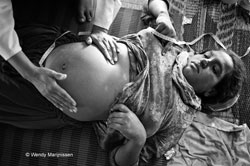
Hamida is a pregnant woman I met over 1.5 months ago in one of the many flood camps in Pakistan. In the final stages of her pregnancy I had the honor to spend lots of time with her and her family and document their life in the camp. Last week she gave birth to a baby boy Rehan Ali and the family is hoping to return to their village very soon to rebuild their lives. More images and in depth coverage on this incredible family can be seen on my website: http://wmarijnissen.photoshelter.com/ gallery/Hamida-work-in-progress/G0000y0lH46v4ZqY/
I met Wendy Marijnissen, 36, a photojournalist from Belgium and was quite intrigued by her story. An aspiring woman looking to capture the truth as it is, she came to Pakistan in Nov. 2009, throwing all caution to the wind that included turning her back on the travel advisory that warned western travelers. She believed in visiting with “an open mind” as the best entrance to a new country. Her mission—to capture through her lens the lives of Pakistani women. “I wanted to portray the Pakistani women, to give to the western audience a different view, which is less clichéd than what people might expect,” she told me.
Given the security concerns in Pakistan, Wendy was brave. Moreover her target was to enter regional domains that are usually restricted to male photographers who find it easier to venture into the male dominated culture that identifies the inner regions in Pakistan. But Wendy`s commitment and story shows that a woman with a camera can portray an altogether different angle.
Perhaps the best thing that happened to her on her first trip to Pakistan was meeting Dr Shershah Syed. His commitment to give women the best healthcare he could provide inspired her and convinced her that “maternal health” was a “story” that she could pursue.
Wendy`s poignant photos of the displaced pregnant women in relief camps who had settled there after the 2010 June floods in Pakistan that submerged one fifth of the country following the torrential rains, and the meticulous text of the captions, captures every little detail. But then her approach to the subject is different too. She takes her time before clicking.
“A snapshot feels quick. It’s like stealing a picture. But I’d like to feel the people I photograph gave me the picture. That is why I call myself a documentary photographer,” she told me.
And so, on her third trip to the country, she spent a good ten weeks in camps for the displaced people. The first step was to get to know a few displaced families and the doctors working in camps. She told me, “the story became much more personal” and took a life of its own instead of being a mere statistic”. She recalled the night Hamida, an internally displaced person (IDP), delivered a baby boy at a private hospital in Karachi which was providing free reproductive healthcare to IDP women. Belonging to Shikarpur village, Hamida, and her family had been living in a relief camp for two months when Wendy met her. “I was tagging along with a midwife, visiting different tents talking to pregnant women. With Hamida I immediately felt a bond; it’s hard to explain the reason… maybe because she opened up to me easily,” she pondered. According to Wendy, the mother of four had had complicated deliveries and had suffered from bleeding in all her earlier deliveries. That made the photographs of Hamida`s safe delivery all the more important for Wendy.
At the same time, through the images of these IDP women, she was also able to illustrate the warm hospitality that marks the culture of Pakistan. “I found the people extremely hospitable despite their difficult situation”. She was also taken in by the colourful traditional clothes worn by the women that had beautiful hand embroidery.
But her most compelling photos were the way she was able to capture the treacherous life at camps, especially the difficulties faced by the women. “Large families living within the cramped space of a single tent for months on end is in itself treacherous,” she explained, adding: “There was no bedding, no floor matting either, so they ate and slept on the dusty floor. During the day it would get scorching hot inside the tent but women had no choice, given their cultural restraints, but to stay inside. There were showers and toilets but few women used them and preferred to wash themselves outside their tents with their clothes on.”
“By taking photos, I was able to portray the resilience and perseverance of the people which is their culture,” she said “I couldn’t help but marvel at the dignity with which they held themselves,” she explained. Wendy said given the appalling conditions, people remained calm and smiling most of the time.
Her hospital visits showed the glaring inadequacies in local healthcare provision. “The hospitals were overcrowded and under-staffed,” she observed. ”Little wonder then that many women opt for home deliveries by unskilled birth attendants which results in such high maternal mortality and morbidity.”
According to the United Nations Population Fund (UNFPA), 320 women die for every 100,000 live births in Pakistan. The country’s Demographic and Health Survey (2006-07) meanwhile reports that Pakistan has about 30,000 pregnancy-related deaths each year.
In addition, the UNFPA reported that of the 18 million displaced by the floods, 70 percent were women. Nearly 500,000 of these women were pregnant. That translated to some 1,700 going into labour each day, of which, UNFPA had warned, more than 250 would experience complications and be in need of emergency medical procedures.
Wendy also observed live births during her time in the relief camps, an experience she says was “nothing short of a miracle”. Perhaps what impressed me most were her words when she said she felt “privileged” to be able to be part of birth process and there were moments when during delivery, she actually wanted to keep the camera aside as she found it “intrusion of a very private and significant moment in a woman’s life”. She was very careful to respect their Muslim culture and took great care that she didn’t photograph women in postures that appeared indecent or exposed them in ways that would embarrass them. And she said, the lesson she learned was that she realized that being a female photographer was an advantage in Pakistan as it enabled her to participate in the most intimate moments of a local woman`s life.
Among the moments captured by her photographs, the most cherished ones are of mothers hugging and nestling their newborn for the very first time. But she has also seen the “baby being taken away and put in the hands of the mother-in-law first and later to the mother after she returns to her ward”.
This is the experience of a foreign woman who tirelessly spent her time capturing the difficult maternal health conditions faced by poor and rural women in Pakistan. Wendy cames from a different culture where expectations of high health standards are a given. But when she left , she told us and the world another viewpoint—the resilience of Pakistani women who bravely give birth in places with callous conditions that represent what the richer west will never know.
]]>Journalist and author

Standing (left) by the Unit 731 Museum in Pingfan, near Harbin with daughter and grandson of a Chinese human guunea pig. The daughter discovered her father was arrested and sent to Unit 731 more than sixty after the end of World War ll in 1945. The discovery of his record as anti-Japanese Russian spy was made available to her through the Imperial Japanese Army Kempeitai (Japanese version of Gestapo) records that were discovered in postwar China.
Shocked by sufferings of A-bomb survivors
I have been working in the field of TV journalism for nearly 30 years, mainly for Western television stations covering Japan. During my school education I had learned very little about World War ll and the human suffering caused from that war.
When I covered for the first time the A-bomb survivors of Hiroshima and Nagasaki for a BBC Television documentary, I could not stay in the display room of Peace Memorial Museum much longer than 30 minutes. I felt like I was being suffocated when I faced to their stories and had to get out to take a deep breath.
Since my working for the BBC documentary called “The Darkness of God”, that featured the United States atomic bombing in Hiroshima and Nagasaki, I began to question about this war as the worst criminal action against humanity. When one individual kills one person, he or she would be accused as a murderer. Why is it then that when the armed force of one country had mass-murdered civilians of the enemy country, the military will not be accused for this horrible crime?
Only because this is what war is about? Is it because during wars it is the normal practice for people to kill each other? I still don’t know the answer for this “naïve” question. Since then I have covered many war stories like the battle in Okinawa that involved the family suicides in Kerama islands, Japanese atrocities committed in China including Nanking massacre, sex slavery in the occupied areas in South East Asia and China and so forth. Also the Pearl Harbour attack in 1941 and later the fall of Singapore and Hong Kong to Japanese military, Japanese cannibalism in Mindanao and New Guinea are also truths that I have investigated mostly by relying on stories that are told best by witnesses who are now getting too old and passing away every week.
Trapped by Unit 731
Among them, one story that disturbed me very much was about Unit 731, the Japanese Imperial Army’s Biological Warfare Unit, which was comprised of Japanese medical scientists, microbiologists and zoologists. Those elite scientists developed biological warfare weapons of mass destruction and to do this they conducted research by using germs indiscriminately to make people succumb horrible infectious diseases. The aims of the human experiments were to develop vaccines to protect the Japanese forces and to develop more lethal germs to kill more enemy. They waged germ war over Chinese towns by dropping plague contaminated flea bombs, dumping cholera and typhoid culture solution into the rivers and feeding starving people food contaminated by dysentery. Chinese and Korean anti-Japanese resistant campaigners were rounded up under the accusation that they were anti-Japanese bandits or spies. Many of them were sent to Unit 731 in the outskirt of Harbin to be consumed as human guinea pigs. They called those prisoners maruta(logs of wood) for they were used to test all sort of germs and later their bodies were vivisected to check and record the pathological effect. In the process of the research, I came across the Allied Prisoners of War(POW) camp in Mukden(presently called Shenyanghai, Manchuria.) In Mukden camp there were mainly American soldiers who were captured in the Philippine and British and Australians who were captured in Singapore. In Mukden, there were the Mukden Army Hospital and Manchurian Medical College which were two important research bases for Germ Warfare Unit of Japanese Kuwangton Army, meaning Unit 731. I also got the records of Unit 731 scientists who were regularly visiting POW camp in Mukden to carry out the research about the different effect of various germs over different ethnic races. One British prisoner kept diary which recorded they recieved 18 inoculation injections within a span of almost three years and 50cc of blood were collected every month from over 1000 prisoners.
That is how I came across with issues of POW camps in and outside of Japan. I joined in the foundation of POW Research Network Japan in 2003.(homepage; http://www.powresearch.jp) We have progressed extensive research about POW and
civilian internment camps. And we help POWs and their families to get some informations about the camps and their locations. We often give them guidance when they visit Japan. In recent years I am mainly working on Allied POW camps in China including Mukden.
Effects of War
After the war was over, American military wished to monopolize the data Unit 731 accumulated over 20 years in exchange for immunity to those war criminal of worst type. As a result of the deal, none of Biological warfare unit and Chemical warfare unit(poison gas) was prosecuted in the Far East War Crime Court led by America. Only Soviet Russia had Khabarovsk Trial finding total of 12 Unit 731 and Unit 100(Kwantung Army Hippo-Epizootic Unit)members among Japanese forced labour in Siberia who were rounded up in Manchuria. Unit 731 scientists and military surgeons and their families returned to Japan much earlier than other ordinary Japanese civilians based in Manchukuo. My research has shown that many of these scientists were really afraid of prosecution of war crime and lived in hiding. But because this has not happened due to deals with the American Occupation we see that in post war Japan many of these scientists had gone back to their work in university laboratories, hospitals, pharmaceutical campanies and schools to lead their lives as respected members of the society. These Japanese had no need to run away to Brazil like the Nazi doctors had to in spite of exactly same type of cruel crimes they had committed. The case of Unit 731 is another symbolic case to explain why Japan has never faced its war crime and the atrocities they committed. The government has avoided the issue of compensation and issuing a sincere apology to those victimized in South East Asia and China. Chinese people believe Unit 731 and Sex Slavery(comfort women for military brothels) are two of the most unbearable crimes they had to suffer by Japanese.
I believe that Japan should face up to the past which is crucial to build better relations with those victimized countries. But modern Japan has continued to be a client nation under the United States of America and what is ironic is that Japan, the only country that experienced the misery of A-bomb, is in fact, under the nuclear umbrella of America. Washington has never apologized to the victims and survivors for the A-bomb and those Allied POWs, who are still suffering from psychological and physical injury during their captivity in the Japanese camps, are under the notion that the A-bomb defeated Japan and saved their lives.
We may have finished World War ll but the after-effects of this war linger on and has been carried over several generations. This is the lesson that I learned through my long research of war.
thank you.
]]>